I tried out National Geographic's next-generation ancestry test, and was surprised by my results
A box containing my Genographic Project Geno 2.0 test arrived at my office in December 2016, and I couldn't wait to check it out.

Inside the sleeve was a booklet and a box from Helix. A company spun out of sequencing giant Illumina, Helix is positioning itself as the app store for your DNA. Once I sent in my tube of spit containing my DNA, Helix could then apply that information to other tests down the line — not just the National Geographic one I was trying now.

Source: Business Insider
The box was unlike other DNA tests I've tried out. The combination of geometric shapes and bright boxes made it fun, and when I lifted up the pink box I found a helpful tip written underneath: " Having trouble salivating? Think about lemons!"
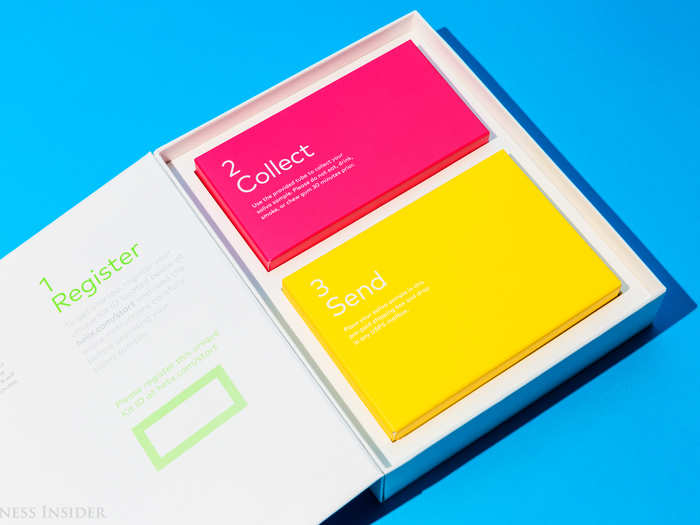
So, I got started collecting my saliva into the provided tube, excited that this might be the last time I'd have to do this step for a while, even if I decided to review another test.

Once that was done, I packaged it up in a bag labeled "biohazard," slipped it into the bright yellow box provided, and it was on its way.
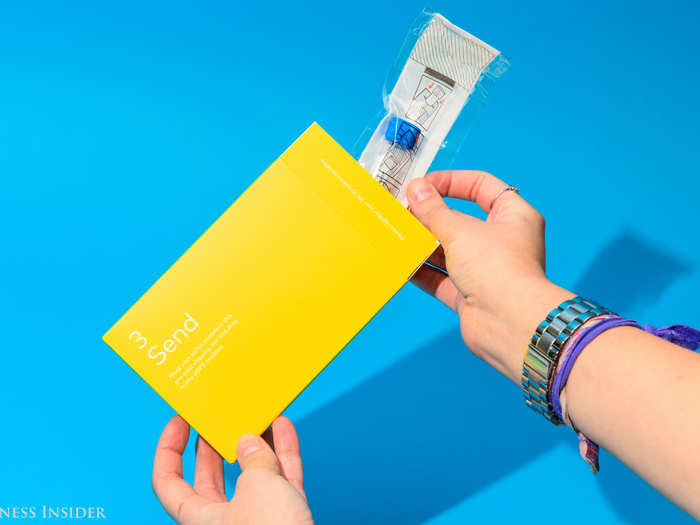
I sent my sample in the first full week of December, and roughly two months later, I got my results! A word of warning: the email telling me my results were ready originally showed up in my spam folder.
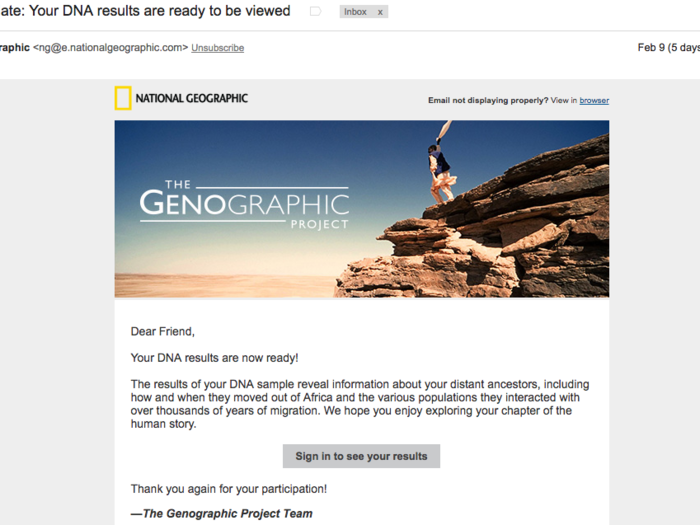
When I got to the homepage for my results, I was first taken in with how simple the layout was. One main page plus a side bar containing information and other ways to access my analyzed data.
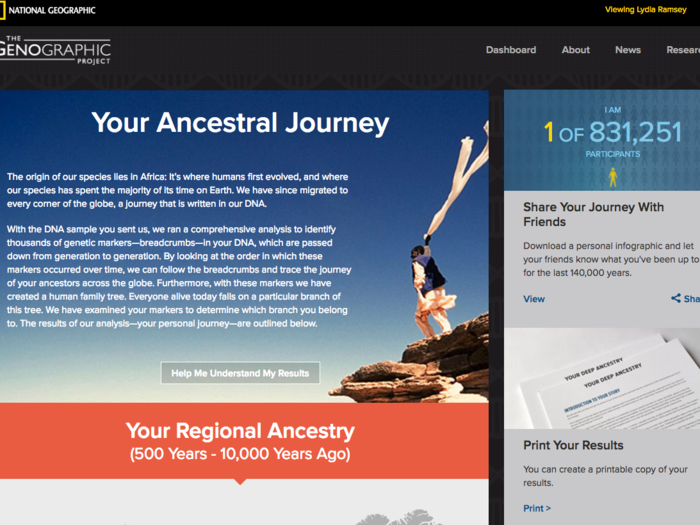
After quickly scrolling by my regional, deep, and hominin ancestry — which would tell me where my ancestors came from more than 500 years ago, my ancestor's migration patterns thousands of years ago, and how much DNA I have in common with a Neanderthal — I decided to start by taking in some of the videos the Genographic project had on hand.

These videos gave me a good description of how the information on a person's Y chromosome (if the person has one) or mitochondrial DNA can help researchers parse together that person's ancestry.
Then, I went into my regional ancestry report, spanning back 500 to 10,000 years. The dots of purple, pink, and orange did NOT look like what I had expected.
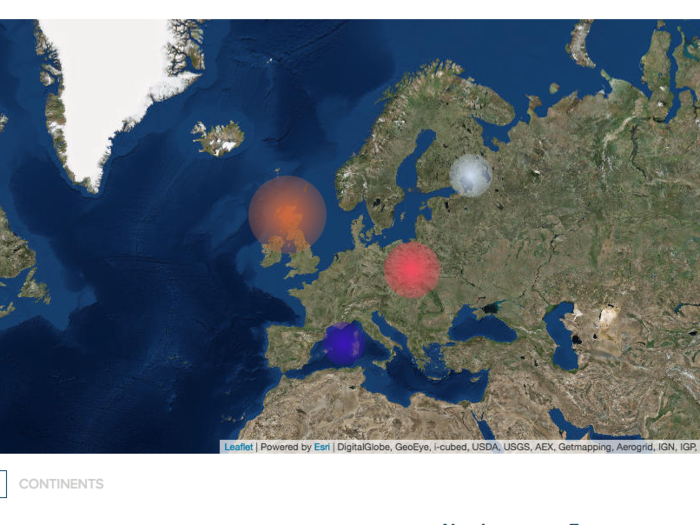
It looked a lot different from the overwhelmingly Scandinavian ancestry I had based on Ancestry and 23andMe's tests. Miguel Vilar, science manager of the Genographic Project, told Business Insider that the project decided to keep the results more general in Europe so that they could focus on other regions around the world.

Once I hovered, I got a different picture of my results, with Sweden and Norway highlighted. But the Mediterranean results were still throwing me off. It wasn't something I'd seen in either 23andMe or AncestryDNA test.
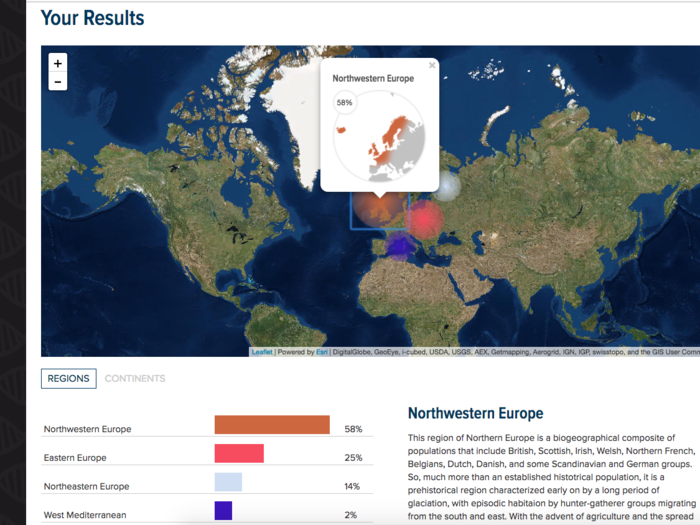
Vilar explained that some people have small amounts of this result because the islands of Corsica and Sardinia were largely full of merchant traders who might have mingled with some of the folks in Northwestern Europe.
The results got me thinking about the fundamental differences between AncestryDNA and 23andMe's tests compared to Helix's.
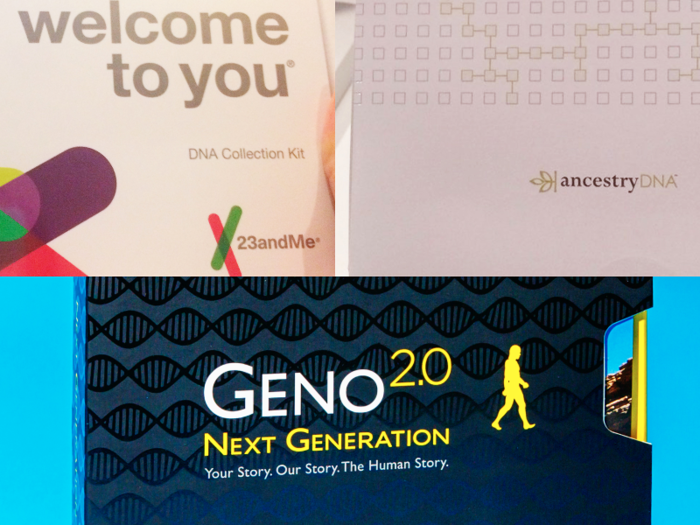
Over the last year and a half, I've taken two other genealogy tests: 23andMe and AncestryDNA. Both of those test analyzed my spit using genotyping technology, while Helix uses next-generation sequencing.
We have 3 billion base pairs of DNA in our entire genome. That's a lot of information to sift through. There are speedy ways to get the information that you want, such as genotyping, where a machine looks for specific parts of DNA and pieces them together.
You can also look at only the protein-encoding parts of your genome (called the "exome"), which is what Helix does. The next-generation sequencing analyzes roughly 2% of those 3 billion base pairs, Helix senior vice president of applied genomics James Lu told Business Insider.
Lu explained that the additional information Helix picks up could lead to new features in the future with partners like National Geographic, especially as our knowledge of the genome and exome continues to grow.
The reference populations really threw me off too. German? Dutch? Where was this coming from? Vilar explained that the reference populations gave me a snapshot of how similar I am to people alive today living in certain countries. Matching my family history wasn't necessarily the point.

It was fun to play around with my maternal haplogroup, which charted out my very-ancient ancestor's migration around the world. Vilar explained that the point of these stories is to show that everyone has origins in the same place.
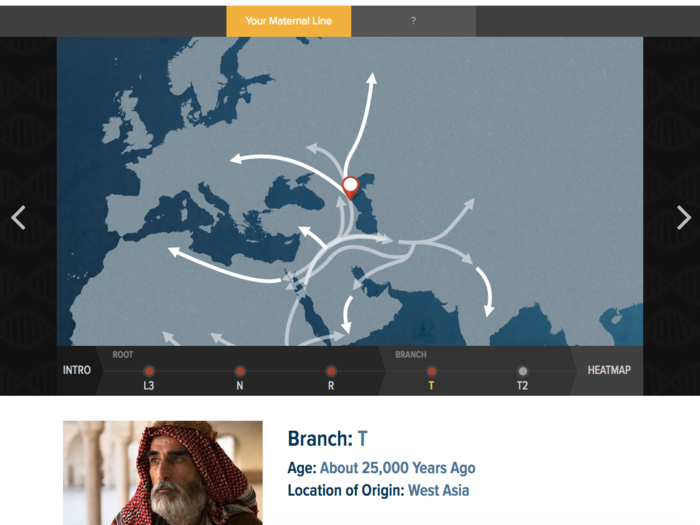
Much like 23andMe, the NatGeo test told me my Neanderthal makeup. Vilar said the point of the report is to give even more perspective of human origins. "We’re not all human. We mixed with a related species," he said. That's why we have a little Neanderthal DNA in all of us.

Here's what 23andme's version of the Neanderthal results look like.
The verdict.
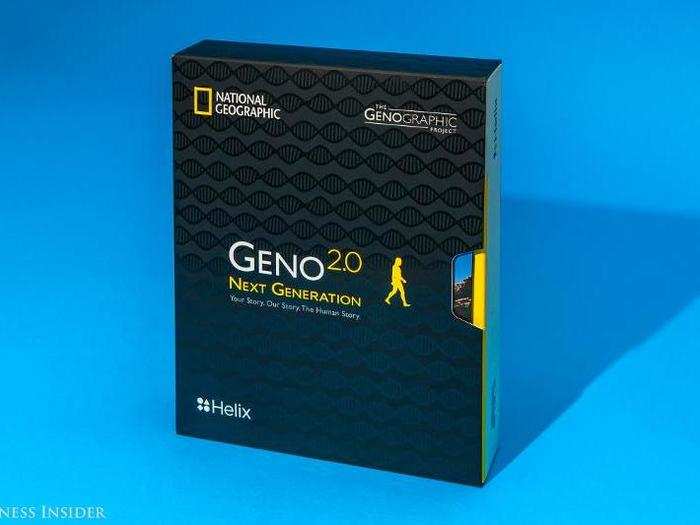
The Geno 2.0 test currently costs $149.95, and was originally $199.95. National Geographic notes that the money goes to nonprofit "conservation, exploration, research and education." For what you get — a general sense of your regional ancestry, deep ancestry(the haplogroup results), and hominin ancestry — the test doesn't have nearly the range that other ancestry tests have.
Vilar said what distinguishes the National Geographic test from other ancestry tests is its focus on that deep ancestry and the stories migration patterns tell. There's also a fair amount of citizen science that the test has sparked in its 12-year history, which builds out our understanding of human migration patterns.
What I am really interested in — and what I think could help justify the high price — is the access to other tests I'll have now that I'm on the Helix platform. This is the first test available on the platform, but ideally if I wanted to use another one in the future, that same information from the tube of spit I submitted to National Geographic would work — no further spit collection needed from me.
Popular Right Now
Advertisement